The story of coffee is a story of trade itself. First exported by merchants from Ethiopia to the Middle East in the 16th century, the savory and stimulating beverage then spread through trade routes around the world. In each stop from Mocha (Yemen) to Java (Indonesia), the bean, its preparation, and its social spaces were shaped by local palates and customs -- and in some Asian countries, like Japan, coffee had a harder time taking root because it was secondary to the long-established culture of tea drinking. Today, however, Japan is considered one of the global hubs of coffee culture. How did coffee captivate a tea-loving country and become one of its proudest contemporary traditions?
In the 16th and 17th centuries, Dutch and Portuguese traders brought the first coffee beans to Japan via the port of Nagasaki, but there was little local interest. For connoisseurs of tea, coffee was considered bitter, and without the refinement, variety, and subtlety of tea leaves. It took until the end of the 19th century for the first coffee shop, or kissaten, to open in Japan.
The shop, named “Kahiichakan”, was launched in Tokyo’s Ueno district in 1888 by a worldly and ambitious young man named Tei Eikei, who had recently returned home after studying at Yale University in the United States. In his travels after graduation, he spent time in London, where he fell in love not only with coffee, but with the entire concept of the Western coffee house - a salon-type space for reading, socializing, and sharing new ideas over endless cups of brew. He designed “Kahiichakan” according to this vision, complete with Western decor, leather chairs, newspapers, and plenty of tobacco. Though “Kahiichakan” went bankrupt after only five years, it planted the seed of other kissaten to come, and symbolized the Meiji-era openness to new Western ideas, products and trends that coffee also signified.
Around this time, another development was changing the global coffee trade - the mass migration of Japanese laborers to the booming coffee farms of Brazil. Many of these workers went on to own and operate coffee plantations themselves, and were interested to introduce their crops back home. In 1911, a businessman named Ryo Mizuno opened “Cafe Paulista” in Tokyo’s Ginza district selling Brazilian coffee, and soon opened another 22 shops across Japan and Shanghai as one of the world’s first coffee chains. Kissaten sprouted all over the country in the Taisho era (1912-1926) as a new type of social space with endless variations, such as the jun-kissa (a “pure cafe” serving only nonalcoholic beverages), or the jazu-kissa (a cafe playing the latest jazz records).
During World War II, however, import restrictions on coffee meant the nation’s burgeoning coffee culture was put on hold. In the post-War era, cheaper and plentiful coffee beans flooded back in, so kissaten became ever more popular and accessible for a new generation fascinated with Western culture. But coffee companies realized they also needed to serve the businessman-on-the-go, not just those with the leisure time to hang out at the kissaten all afternoon. The first canned coffees came on the market in the late 1960s, pioneered by Tadao Ueshima, whose UCC Ueshima Coffee Company had been founded in 1933 in Kobe, and facilitated by the rise of hot-and-cold vending machines introduced by Pokka Coffee in 1973. Chain cafés like Doutor Coffee also began spreading across the country starting in 1980, prioritizing efficiency over experience - and in some ways predating Starbucks, which only started a massive expansion in the mid-1980s.
At the same time these innovations were aiming to make coffee speedy and standardized, others in Japan were focused on slowing down and perfecting it. In the early 1970s, Mamoru Taguchi, owner of Tokyo’s Cafe Bach, began roasting his own beans and developing his philosophy of kohi-gaku, or “coffee-ology”, including detailed classifications of types of roasts, brewing methods, and beyond. He wasn’t alone, as others in old-school kissaten or more modern kafe, began to formalize their traditions, or experiment with new ones - such as the drip-by-drip cold-brewing pioneered in Kyoto. Similar to the story of denim and blue jeans in the country, Japanese connoisseurs took on a “foreign” cultural object, and over time, began to refine it as a true art form instead of merely a “product” - redefining it as truly Japanese in the process. Coffee became a space for expression, mastery, and craftsmanship in contrast to chain stores and vending machine cans, not to mention the arrival of Starbucks to Japan in 1996. Japan’s so-called “third-wave coffee” (sādo wēbu kōhii) movement also took in influences from other artisanal coffee scenes such as Australia (the home of latte art and flat whites), and became known as a destination for obsessive coffee fans around the world. In 2002, Jason Freeman founded Blue Bottle Coffee in Oakland, California, taking direct inspiration from Japanese “third-wave coffee” in creating his brand that prioritizes bean quality, painstaking pour-over techniques, and minimalist design - almost the “anti-Starbucks”. Blue Bottle has thus popularized Japanese coffee culture across the U.S., and came full circle when it opened its first Tokyo location in 2015.
Though some of Tokyo’s oldest kissaten have become victim to urban change and disappeared from the landscape, many still remain, and their influence can be felt in diverse types of kafe around the globe. Meanwhile, Japan’s most intrepid baristas and coffee devotées are continuing to develop new crops, techniques, and spaces of coffee culture. Who knows what the “fourth wave” might bring?

